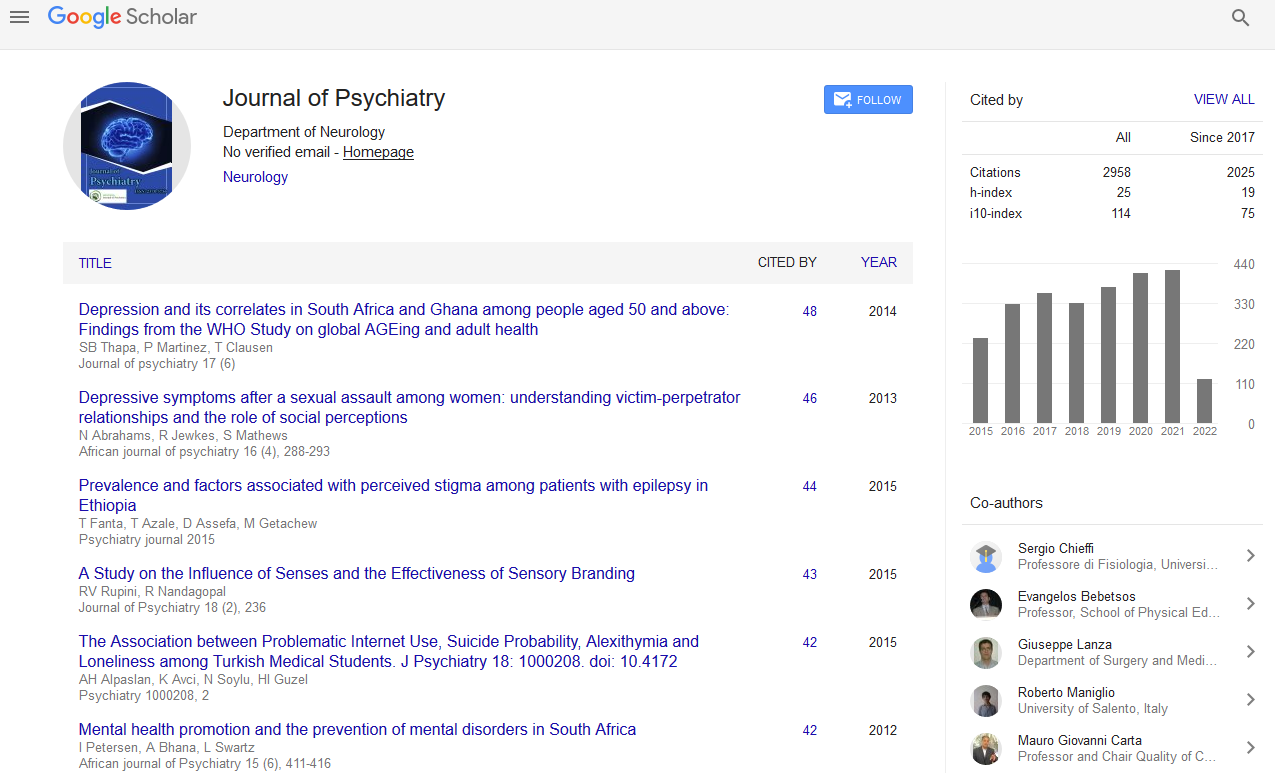PMC/PubMed Indexed Articles
Indexed In
- RefSeek
- Hamdard University
- EBSCO A-Z
- OCLC- WorldCat
- SWB online catalog
- Publons
- International committee of medical journals editors (ICMJE)
- Geneva Foundation for Medical Education and Research
Useful Links
Share This Page
Open Access Journals
- Agri and Aquaculture
- Biochemistry
- Bioinformatics & Systems Biology
- Business & Management
- Chemistry
- Clinical Sciences
- Engineering
- Food & Nutrition
- General Science
- Genetics & Molecular Biology
- Immunology & Microbiology
- Medical Sciences
- Neuroscience & Psychology
- Nursing & Health Care
- Pharmaceutical Sciences
Abstract
Psychiatry 2019: Exploring ocular and head kinematics in an immersive virtual environment for post-stroke neurorehabilitation - University of Amsterdam
In the Netherlands, about 43,000 people suffer a stroke each year, and more than 320,000 people have to cope with its consequences. Following a stroke, brain cells in the tissue surrounding the injury die, resulting in motor impairment and cognitive disabilities. Since current forms of rehabilitation are very tiring and repetitive for patients, novel effective rehabilitation approaches using serious gaming and virtual reality (VR) are being developed. With serious gaming, it is possible to study how people with cognitive disabilities, sometimes combined with ocular and/or motor deficits, observe their environment and process visual information. For instance, the standard tests for the assessment of post-stroke visual neglect are only useful when identifying peri-personal neglect (near space), and not personal (body) or extra-personal (far space) neglect. The shortcoming of screening for neglect in the extra-personal space can be overcome by using stereoscopic imaging in VR, which enables a three-dimensional environment. Furthermore, the field of view could be adapted during execution of different cognitive tasks to what the individual is able to see following post-stroke neglect or visual field loss. Consequently, assistive eye- and head-tracking technologies should be integrated with a VR environment to observe the gaze patterns and head movements of stroke patients. This assessment would allow more personalized rehabilitation and could possibly detect whether additional visual treatment is necessary. In this way, cognitive recovery will be accelerated by taking into account the possibilities of eye- and head-tracking in virtual environments for optimal cognitive assessment and rehabilitation following different types of stroke.


